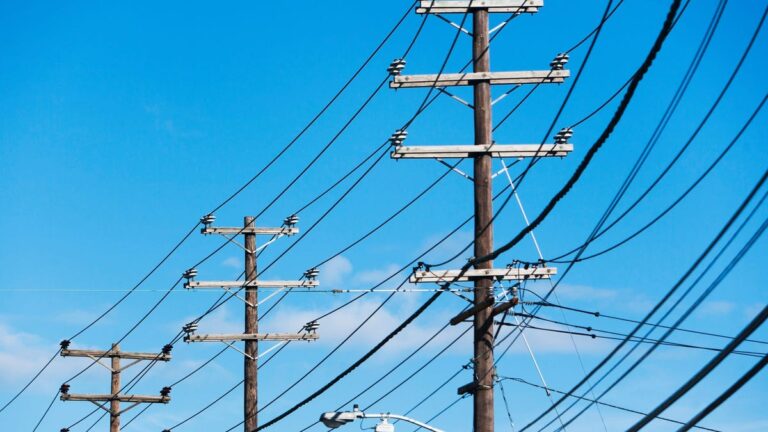In the early days of home internet, a phone line was the key to accessing the world wide web. A lot has changed since then, and many homeowners and internet providers have left the landline behind in favor of updated technology.
Now, most internet connection types — cable, fiber, fixed wireless, satellite and 5G — have nothing to do with a phone line at all and don’t require you to have an active landline. Even DSL, which does use existing phone lines to deliver service, typically does not require you to sign up for home phone service in order to get internet, though it may be included at no extra cost, depending on the provider.
So can you get internet without a phone line? Absolutely, and doing so is as simple as knowing a little about how internet connections work, as well as what’s available in your area. Here’s what you need to know.
How to get internet without a phone line
It’s pretty simple: Just sign up with a provider that uses a cable, fiber, fixed wireless, satellite or 5G home internet network. None of these connection types require a phone line to your home.
Cable internet is the most readily available option for internet without a phone line, as coverage spans more than 82% of US households, according to the Federal Communications Commission. Providers such as Xfinity, Spectrum, Cox, Mediacom and Optimum deliver the internet via coaxial cables or a hybrid fiber network in some areas. Either way, there are no phone lines involved.
As for fiber internet, though less available than cable at roughly 46% nationwide coverage, it’s also a popular option for internet without a phone line. Most major fiber providers, including AT&T, Frontier and Verizon, use a 100% fiber-optic network, which means fast download and upload speeds, supreme reliability and no need for a phone line.
It is important to note, however, that fiber providers often also employ a separate DSL network, particularly to deliver service in suburban and rural areas, which does require a phone line to your home.
If cable or fiber internet is unavailable, check out wireless internet options
Satellite internet from HughesNet, Viasat or possibly Starlink and fixed wireless internet from providers such as Rise Broadband beam internet signals to homes without the use of any direct lines, phone or otherwise.
5G home internet also arrives over the air, just like data to your smartphone, and can offer speeds and pricing that rivals cable and fiber internet service in many areas without the need for a direct line (including a phone line) to your home.
So far, T-Mobile and Verizon are leading the 5G home internet charge, though AT&T now also offers a 5G home internet service as well. Verizon boasts a faster speed potential, but T-Mobile has greater coverage, particularly in rural areas. Speeds and availability will depend upon your home’s location.
You will need a phone line for dial-up or DSL
There are some instances where using a phone line for home internet service makes sense, particularly if you are looking for a very cheap, very basic dial-up connection, or if you’re relying on DSL for internet in a rural area.
You probably won’t find an internet service cheaper than dial-up. In fact, some dial-up providers like NetZero and Juno may offer free internet for 10 hours or so per month. However, you also probably won’t find an internet service slower than dial-up.
Max speeds might reach 1 megabit per second, which is good for little more than checking email, but you can forget about streaming or connecting Wi-Fi devices. Oh, and you’ll need a phone line and active phone service, which can offset the savings of a cheap dial-up connection, or even a free one.
Even with DSL, landline service is typically not required
DSL also uses a phone line, but a bit differently than dial-up internet. Speeds are faster (although not by much), and you don’t need active telephone service for it to work. That said, it’s possible that a DSL provider will only sell phone and internet service together, or include home phone service at no extra cost with internet.
One other caveat to DSL that you won’t have with dial-up is that you’ll also need to live in a provider’s service area. Even if you have a phone line running to your home, a provider such as AT&T, CenturyLink or Windstream will need to offer service in your area, whereas it’s possible to get dial-up from virtually any provider, with an active phone line, of course.
Internet without a phone line FAQs
Can I get cheap internet without a phone line?
Dial-up and DSL are among the cheapest internet connection types, and both require a phone line to your home for service, but you may be able to get cable or fiber internet service starting at $20 per month, depending on the available providers in your area. These connection types often offer significantly faster speeds than dial-up or DSL and require no phone line whatsoever for service.
Do I need a phone line for internet in rural areas?
Only if you sign up for dial-up or DSL internet service. Other popular rural internet connections, including satellite, fixed wireless and now 5G home internet, require no direct phone line to the home, or active landline telephone service, to get connected.
Can I get internet without cable?
Internet and TV bundles are a convenient way to sign up for multiple home services with the same provider, and may even save you some money in the process, but cable TV is often not required in order to get home internet service.
On the other hand, some providers, including Mediacom and Optimum, may require you to sign up for internet service in order to get cable. So can you get internet without cable? Yes, but it may not always be possible to get cable without internet.
Read the full article here

